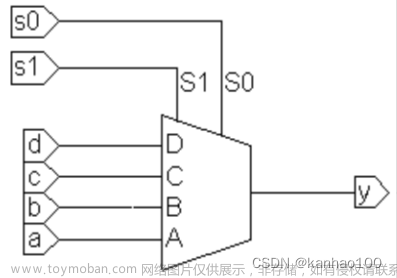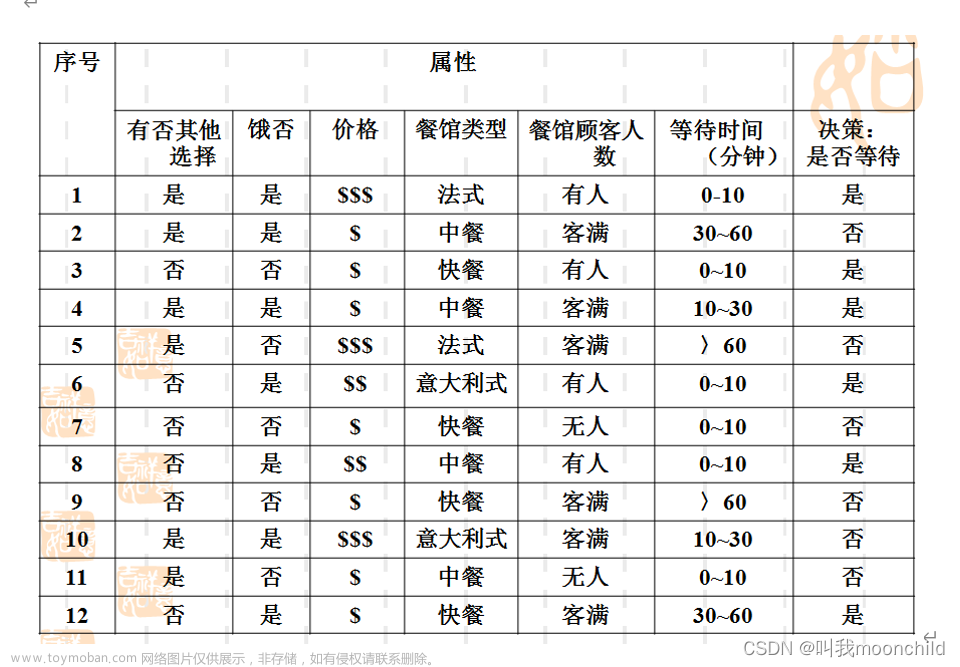队列
1.实验目标
熟练掌握队列的顺序存储结构和链式存储结构。
熟练掌握队列的有关算法设计,并在循环顺序队列和链队列上实现。
根据具体给定的需求,合理设计并实现相关结构和算法。
2.实验内容和要求
循环顺序队列的实验要求
循环顺序队列结构和运算定义,算法的实现以库文件方式实现,不得在测试主程序中直接实现;
实验程序有较好可读性,各运算和变量的命名直观易懂,符合软件工程要求;
程序有适当的注释。
链队列实验要求
本次实验中的链队列结构指不带头结点的单链表;
链队列结构和运算定义,算法的实现以库文件方式实现,不得在测试主程序中直接实现;
实验程序有较好可读性,各运算和变量的命名直观易懂,符合软件工程要求;
程序有适当的注释。
循环顺序队列实验任务
<1>初始化一个队列。
<2>判断是否队空。
<3>判断是否队满。
设队列最大长度:MaxLen=100
第一组数据:入队n个元素,判断队满
第二组数据:用循环方式将1到99,99个元素入队,判队满
<4>入队
第一组数据:4,7,8,12,20,50
第二组数据:a,b,c,d,f,g
<5>出队
<6>取队头元素
<7>求当前队列中元素个数
<8>编写算法实现
①初始化空循环队列;
②当键盘输入奇数时,此奇数入队;
③当键盘输入偶数时,队头出队;
④当键盘输入0时,算法退出;
⑤每当键盘输入后,输出当前队列中的所有元素。
链队列实验任务
<1>初始化一个队列。
<2>判断是否队空。
<3>判断是否队满。
设队列最大长度:MaxLen=100
第一组数据:入队n个元素,判断队满
第二组数据:用循环方式将1到99,99个元素入队,判队满
<4>入队
第一组数据:4,7,8,12,20,50
第二组数据:a,b,c,d,f,g
<5>出队
<6>取队头元素
<7>求当前队列中元素个数
<8>编写算法实现
①初始化空循环队列;
②当键盘输入奇数时,此奇数入队;
③当键盘输入偶数时,队头出队;
④当键盘输入0时,算法退出;
⑤每当键盘输入后,输出当前队列中的所有元素。文章来源:https://www.toymoban.com/news/detail-501326.html
3.数据结构设计文章来源地址https://www.toymoban.com/news/detail-501326.html
#ifndef QUEUELIST_H_INCLUDED
#define QUEUELIST_H_INCLUDED
#include<stdio.h>
#include<stdlib.h>
#define maxlen 100
typedef struct squeue
{
int data[maxlen];
int lfront;
int lrear;
}seqqueue;
typedef struct cqueue
{
char data[maxlen];
int lfront;
int lrear;
}seqcqueue;
typedef struct lnode
{
int data;
struct lnode *next;
}node;
typedef struct
{
node *sfront;
node *srear;
}linkqueue;
typedef struct lcnode
{
char data;
struct lcnode *next;
}cnode;
typedef struct
{
cnode *cfront;
cnode *crear;
}linkcqueue;
void initialqueue(seqqueue q);
int queueempty(seqqueue q);
int queuefull(seqqueue q);
void enqueue(seqqueue q,int x);
void outqueue(seqqueue q);
void queuefront(seqqueue q,int x);
void queueall(seqqueue q);
void ssqueue(seqqueue q);
void encqueue(seqcqueue q,char x);
void initqueue(linkqueue q);
int queuelempty(linkqueue q);
int queuelfull(linkqueue q);
void enlqueue(linkqueue q,int x);
void outlqueue(linkqueue q);
void queuelfront(linkqueue q,int x);
void queuelall(linkqueue q);
void sslqueue(linkqueue q);
void enclqueue(linkcqueue q,char a);
seqqueue creatqueue(void)
{
seqqueue l;
int x;
l.lfront = 0;
l.lrear = 0;
printf("向队列中输入元素。(输入9999停止)\n");
scanf("%d",&x);
while(x!=9999)
{
l.lrear = ((l.lrear+1)%maxlen);
l.data[l.lrear] = x;
scanf("%d",&x);
}
return l;
}
seqcqueue creatcqueue(void)
{
seqcqueue l;
char x;
l.lfront = 0;
l.lrear = 0;
printf("向队列中输入元素。(输入0停止)\n");
scanf("%s",&x);
while(x!='0')
{
l.lrear = ((l.lrear+1)%maxlen);
l.data[l.lrear] = x;
scanf("%s",&x);
}
return l;
}
linkqueue creatlqueue(void)
{
linkqueue l;
int x;
node *p,*r;
l.sfront = (node *)malloc(sizeof(node));
l.srear = l.sfront;
l.sfront->next = NULL;
r = l.sfront;
printf("向队列中输入元素。(输入9999停止)\n");
scanf("%d",&x);
while(x!=9999)
{
p = (node *)malloc(sizeof(node));
p->data = x;
p->next = NULL;
l.srear = p;
r->next = p;
r = p;
scanf("%d",&x);
}
return l;
}
linkcqueue creatclqueue(void)
{
linkcqueue l;
char x;
cnode *p;
l.cfront = (cnode *)malloc(sizeof(cnode));
l.crear = l.cfront;
l.cfront->next = NULL;
printf("向队列中输入元素。(输入0停止)\n");
scanf("%c",&x);
while(x!='0')
{
p = (cnode *)malloc(sizeof(cnode));
p->data = x;
p->next = NULL;
l.crear->next = p;
l.crear = p;
scanf("%c",&x);
}
return l;
}
void menu(void)
{
int m;
loop:
printf("循环顺序队列实验任务:\n");
printf("<1>初始化一个队列。\n");
printf("<2>判断是否队空。\n");
printf("<3>判断是否队满。\n");
printf("<4>入队。(数字)\n");
printf("<5>入队。(字母)\n");
printf("<6>出队。\n");
printf("<7>取队头元素。\n");
printf("<8>求当前队列中元素个数。\n");
printf("<9>编写算法实现功能。\n");
printf("\n");
printf("链队列实验任务:\n");
printf("<10>初始化一个队列。\n");
printf("<11>判断是否队空。\n");
printf("<12>判断是否队满。\n");
printf("<13>入队。(数字)\n");
printf("<14>入队。(字母)\n");
printf("<15>出队。\n");
printf("<16>取队头元素。\n");
printf("<17>求当前队列中元素个数。\n");
printf("<18>编写算法实现功能。\n");
printf("\n");
printf("<19>清屏。\n");
printf("<20>退出。\n");
printf("\n");
scanf("%d",&m);
printf("\n");
switch(m)
{
case 1:
{
seqqueue q;
q = creatqueue();
initialqueue(q);
goto loop;
}
case 2:
{
seqqueue q;
q = creatqueue();
queueempty(q);
goto loop;
}
case 3:
{
seqqueue q;
q = creatqueue();
queuefull(q);
goto loop;
}
case 4:
{
seqqueue q;
int x;
q = creatqueue();
printf("输入入队元素。\n");
scanf("%d",&x);
enqueue(q,x);
goto loop;
}
case 5:
{
seqcqueue q;
char x;
q = creatcqueue();
printf("输入入队元素。\n");
scanf("%s",&x);
encqueue(q,x);
goto loop;
}
case 6:
{
seqqueue q;
q = creatqueue();
outqueue(q);
goto loop;
}
case 7:
{
seqqueue q;
int x;
q = creatqueue();
queuefront(q,x);
goto loop;
}
case 8:
{
seqqueue q;
q = creatqueue();
queueall(q);
goto loop;
}
case 9:
{
seqqueue q;
q = creatqueue();
ssqueue(q);
goto loop;
}
case 10:
{
linkqueue l;
l = creatlqueue();
initqueue(l);
goto loop;
}
case 11:
{
linkqueue l;
l = creatlqueue();
queuelempty(l);
goto loop;
}
case 12:
{
linkqueue l;
l = creatlqueue();
queuelfull(l);
goto loop;
}
case 13:
{
linkqueue l;
int x;
l = creatlqueue();
printf("输入入队元素。\n");
scanf("%d",&x);
enlqueue(l,x);
goto loop;
}
case 14:
{
linkcqueue l;
char x;
l = creatclqueue();
printf("输入入队元素。\n");
getchar();
scanf("%c",&x);
enclqueue(l,x);
goto loop;
}
case 15:
{
linkqueue l;
l = creatlqueue();
outlqueue(l);
goto loop;
}
case 16:
{
linkqueue l;
int x;
l = creatlqueue();
queuelfront(l,x);
goto loop;
}
case 17:
{
linkqueue l;
l = creatlqueue();
queuelall(l);
goto loop;
}
case 18:
{
linkqueue l;
l = creatlqueue();
sslqueue(l);
goto loop;
}
case 19:
{
system("cls");
goto loop;
}
case 20:
{
goto mmo;
}
default:
{
printf("输入错误。\n");
system("pause");
goto loop;
}
}
mmo:system("cls");
}
void initialqueue(seqqueue q) //<1>初始化一个队列。
{
q.lfront = 0;
q.lrear = 0;
printf("初始化完成。\n");
system("pause");
}
int queueempty(seqqueue q) //<2>判断是否队空。
{
if(q.lfront==q.lrear)
{
printf("队列为空。\n");
system("pause");
return 1;
}
else
{
printf("队列不为空。\n");
system("pause");
return 0;
}
}
int queuefull(seqqueue q) //<3>判断是否队满。
{
if(((q.lrear+1)%maxlen)==q.lfront)
{
printf("队列为满。\n");
system("pause");
return 1;
}
else
{
printf("队列未满。\n");
system("pause");
return 0;
}
}
void enqueue(seqqueue q,int x) //<4>入队
{
int i;
if(((q.lrear+1)%maxlen)==q.lfront)
{
printf("队列已满。\n");
system("pause");
}
else
{
q.lrear = ((q.lrear+1)%maxlen);
q.data[q.lrear] = x;
for(i=q.lfront+1;i<=q.lrear;i=i+1)
{
printf("%d\t",q.data[i]);
}
printf("\n");
system("pause");
}
}
void encqueue(seqcqueue q,char x) //<4>入队
{
int i;
if(((q.lrear+1)%maxlen)==q.lfront)
{
printf("队列已满。\n");
system("pause");
}
else
{
q.lrear = ((q.lrear+1)%maxlen);
q.data[q.lrear] = x;
for(i=q.lfront+1;i<=q.lrear;i=i+1)
{
printf("%c\t",q.data[i]);
}
printf("\n");
system("pause");
}
}
void outqueue(seqqueue q) //<5>出队
{
int i;
if(((q.lrear+1)%maxlen)==q.lfront)
{
printf("队列为空。\n");
system("pause");
}
else
{
q.lfront = (q.lfront+1)%maxlen;
for(i=q.lfront+1;i<=q.lrear;i=i+1)
{
printf("%d\t",q.data[i]);
}
printf("\n");
system("pause");
}
}
void queuefront(seqqueue q,int x) //<6>取队头元素
{
if(q.lfront==q.lrear)
{
printf("队列为空。\n");
system("pause");
}
else
{
x = q.data[(q.lfront+1)%maxlen];
printf("队头元素为:%d\n",x);
system("pause");
}
}
void queueall(seqqueue q) //<7>求当前队列中元素个数
{
int i,x;
x = q.lfront;
for(i=0;x<q.lrear;x=x+1)
{
i = i+1;
}
printf("队列中的元素个数为:%d\n",i);
system("pause");
}
void ssqueue(seqqueue q) //<8>编写算法实现
{
int i=0,x,j,k;
q.lfront = 0;
q.lrear = 0;
printf("向队列输入元素。(输入0后退出)\n");
scanf("%d",&x);
while(x!=0)
{
if(x%2==0)
{
if(i>0)
{
q.lfront = (q.lfront+1)%maxlen;
i = i-1;
}
else
{
printf("当前队列为空。");
}
}
else if(x%2!=0)
{
q.lrear = (q.lrear+1)%maxlen;
q.data[q.lrear] = x;
i = i+1;
}
k = q.lfront+1;
for(j=0;j<i;j=j+1)
{
printf("%d\t",q.data[k]);
k = k+1;
}
printf("\n\n");
scanf("%d",&x);
}
}
void initqueue(linkqueue q) //<1>初始化一个队列。
{
node *p,*s;
p = q.sfront->next;
s = p->next;
q.sfront->next = NULL;
while(p!=q.srear)
{
free(p);
p = s;
s = s->next;
}
q.srear = q.sfront;
printf("初始化完成。\n");
system("pause");
}
int queuelempty(linkqueue q) //<2>判断是否队空。
{
if(q.srear==q.sfront)
{
printf("队列为空。\n");
system("pause");
return 1;
}
else
{
printf("队列不为空。\n");
system("pause");
return 0;
}
}
int queuelfull(linkqueue q) //<3>判断是否队满。
{
int i=0;
node *s;
s = q.sfront->next;
while(s!=NULL)
{
i = i+1;
s = s->next;
}
if(i==100)
{
printf("队列已满。\n");
system("pause");
return 1;
}
else
{
printf("队列未满。\n");
system("pause");
return 0;
}
}
void enlqueue(linkqueue q,int x) //<4>入队
{
node *p;
p = (node *)malloc(sizeof(node));
p->data = x;
p->next = NULL;
q.srear->next = p;
q.srear = p;
p = q.sfront->next;
while(p!=NULL)
{
printf("%d\t",p->data);
p = p->next;
}
printf("\n");
system("pause");
}
void enclqueue(linkcqueue q,char a)
{
cnode *p,*u;
p = (cnode *)malloc(sizeof(cnode));
p->data = a;
p->next = NULL;
q.crear->next = p;
q.crear = p;
u = q.cfront->next;
while(u!=NULL)
{
printf("%c",u->data);
u = u->next;
}
printf("\n");
system("pause");
}
void outlqueue(linkqueue q) //<5>出队
{
node *u,*p;
int x;
if(q.srear==q.sfront)
{
printf("队列为空。\n");
system("pause");
}
else
{
x = q.sfront->next->data;
u 到了这里,关于合肥工业大学 宣城校区 数据结构与算法实验 队列、二叉树、查找和排序的文章就介绍完了。如果您还想了解更多内容,请在右上角搜索TOY模板网以前的文章或继续浏览下面的相关文章,希望大家以后多多支持TOY模板网!











